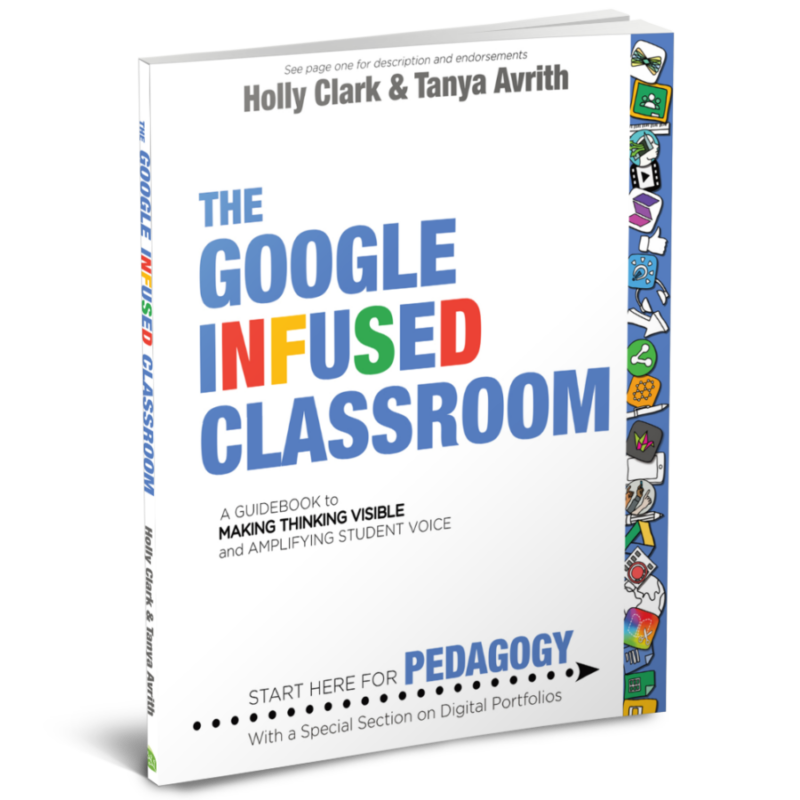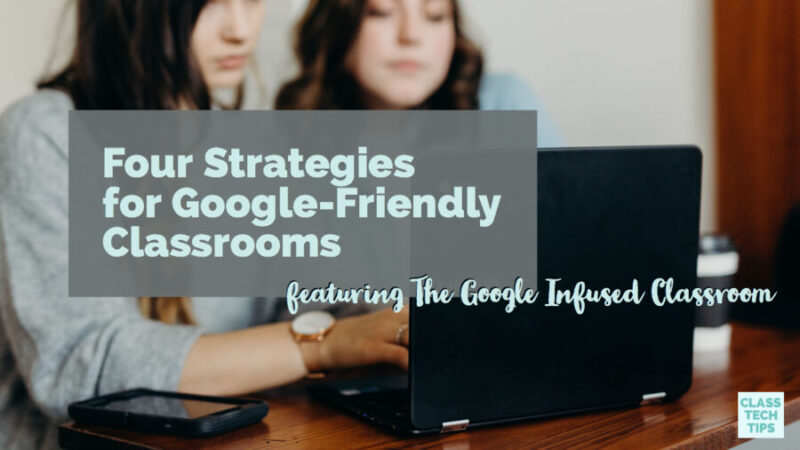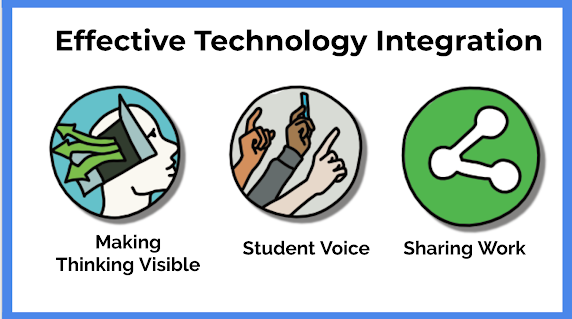Google tools have transformed the way we think about technology in the classroom. Students can collaborate with their peers, and create products that were unimaginable just a few years ago. There are strategies you can try out tomorrow if you’re embracing the power of Google-Friendly tools this school year. And a fantastic resource from two passionate educators you’ll want to explore!
In this blog post, you’ll find an interview with Holly Clark, the co-author of The Google Infused Classroom: A Guidebook to Making Thinking Visible and Amplifying Student Voice. Holly and Tanya Avrith have created a guide for teachers who are committed to transforming teaching and empowering students. I can’t wait for you to hear what Holly has shared, as well as these four strategies for Google-Friendly classrooms!
Strategies for Google-Friendly Classrooms
Publish with Spark Page
Google Docs is a fantastic tool for students. It gives them a space to collaborate and receive feedback from their teachers and peers. Students can take the “final draft” of a project typed up in Google Docs and use it to create a Spark Page website. In Spark Page, students can search and add images in-between each paragraph of text. This final published student piece could even include buttons with links to extra information.
Use Video Responses
If you missed the news earlier this year, Flipgrid is now totally free for educators. What I love about Flipgrid is how it captures the voice (and video) of students. This way they can take part in a discussion, convey emotion, and respond to the contributions of their peers. Flipgrid is perfect for Chromebook classrooms where students use the webcam on their device to participate in a discussion.
Share All About Me Videos
Are you setting up your Google Classroom for the school year? Create a Spark Video introducing yourself to your students. The About section is a great spot to add a link or file – including a video. Try adding an “All About Me” video for students. You might even use this as an exemplar for student projects.
Explore the World
One of my favorite resources to share with teachers is the website Google Arts and Culture. There are lots of fantastic resources on this site for Google-friendly classrooms. I absolutely love the Google street views of notable places around the world. You can share the link with students in Google Classroom so they can explore a spot connected to your content area goals.
The Google Infused Classroom

What does it mean for a classroom to be “Google Infused”?
A Google Infusion means infusing your classroom with a technology tool whose primary focus is to improve teaching and learning. For the purposes of a “Google Infusion,” that tool that is in the Google Ecosystem or even works with a Google Sign-in.
What motivated you to write a book on this using Google in the classroom?
Tanya and I work a lot with teachers who are trying to incorporate technology into their lessons but didn’t know where to begin. Often, they were focusing on the tools first and not necessarily the learning. We wanted to help shift the conversation to what is the teaching and learning I am trying to accomplish and how can technology help me do that in ways that are truly transformational? We are hoping to shift the focus to be on the great and thoughtful pedagogy teachers are already doing and help them see how technology can help amplify what they are already doing so well.
Is there a particular experience you’ve had or a classroom story that made you realize the power of Google tools in the classroom?
Thanks to my work at a really forward-thinking district, River Forest outside of Chicago, back in 2007, I was able to use Google with students when there were only Docs and Sheets (kind of hard to remember that far back). It was so far back, that Google Docs still had a save button. As soon as I started using Google Docs with students, it was seamless because it met the students where they were…online and on Google.
The best part was that a student could work on something at school and without having to access a school drive they could work on it from home as well. Then, when Google went collaborative with the share button and revision history… game over. Everything changed! It opened up educational technology for unlimited learning possibilities, broke down the four walls of the classroom and made life in the cloud something that would revolutionize student work. It was from that point I was hooked.
What do you think is the biggest misconception about using Google tools in the classroom?
I am not sure if this is the biggest misconception, but the biggest miss is when teachers use Google Apps to have students take notes as they deliver a lecture using slides or powerpoint. It’s when teachers don’t use GSuite to allow students to construct knowledge, or make their thinking visible, or to hear from every student in their class.
Google and its ecosystem can break down classroom walls, allow kids to explore, demonstrate their learning and fall in love with problem-solving and we should be using devices and technology for this – not to take notes or do worksheets online.
What are your “must-have” tech tools for classrooms that are Google infused? Is there an “app-smash” you recommend trying out?
The tool that is a must-have for me is Flipgrid. Although this is not a Google tool, kids can access it using their Google accounts, and it has proven to be the most transformational tool in my classroom since I discovered Google Apps. I do like to download some of the student videos from Flipgrid and add them to their digital portfolios built with Google Sites.
Although not a Google-based app smash…I am obsessed with the Flipgrid and Chatterpix app smash! As an example, teachers can allow kids to use the face of a historical character like Shakespeare and answer as if they were him. I have a blog post all about it – that your readers can find here.
Do you have advice for an educator who is new to using Google Classroom or Google tools with students?
As you begin to use technology in your classroom, try to think in terms of doing this framework of three things – (1) making thinking visible, (2) student voice, and (3) allowing students to share their work.
Ready to jump in to Holly Clark and Tanya Avrith’s The Google Infused Classroom? Head over to Amazon to grab the paperback or Kindle version!








